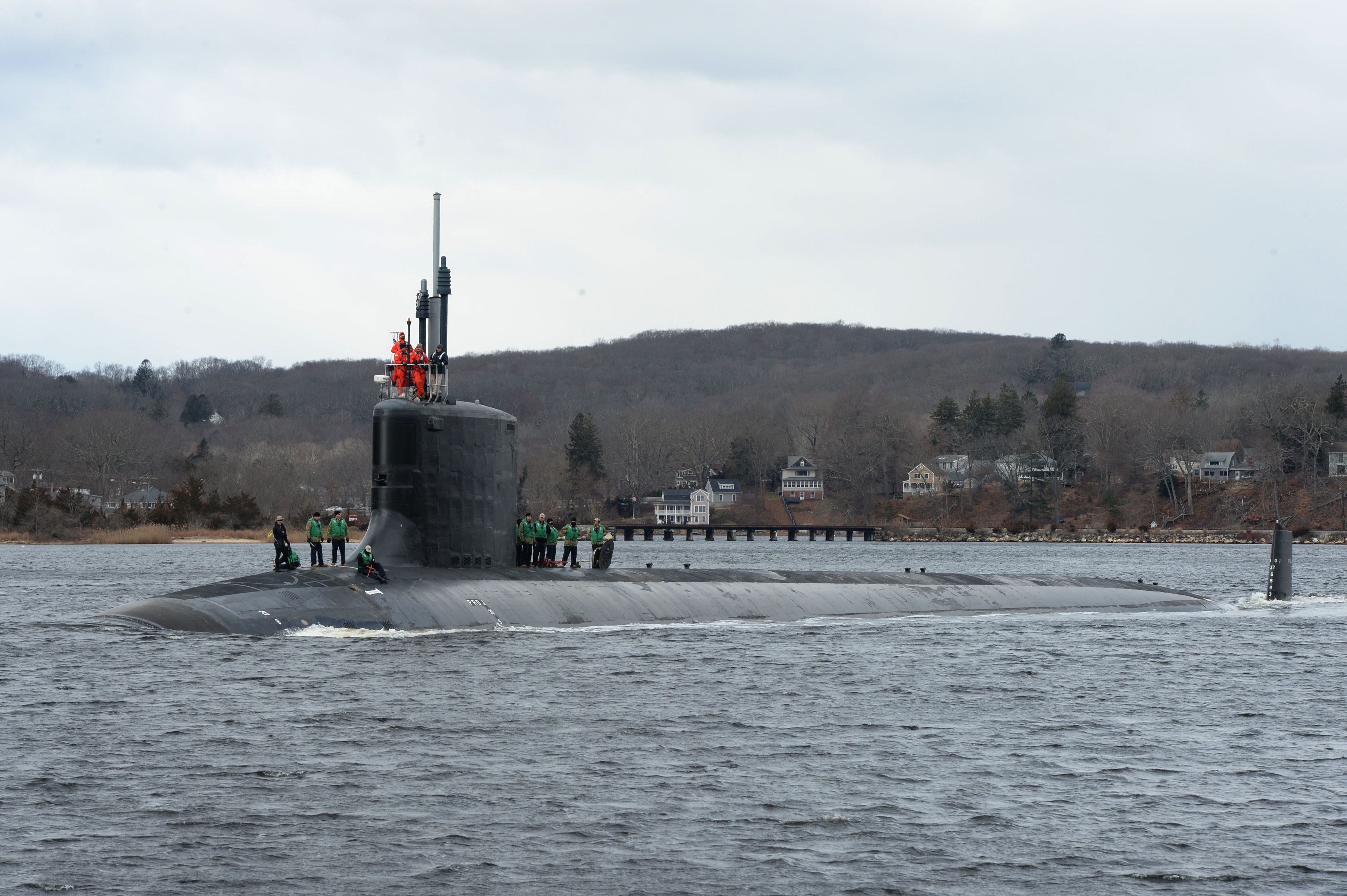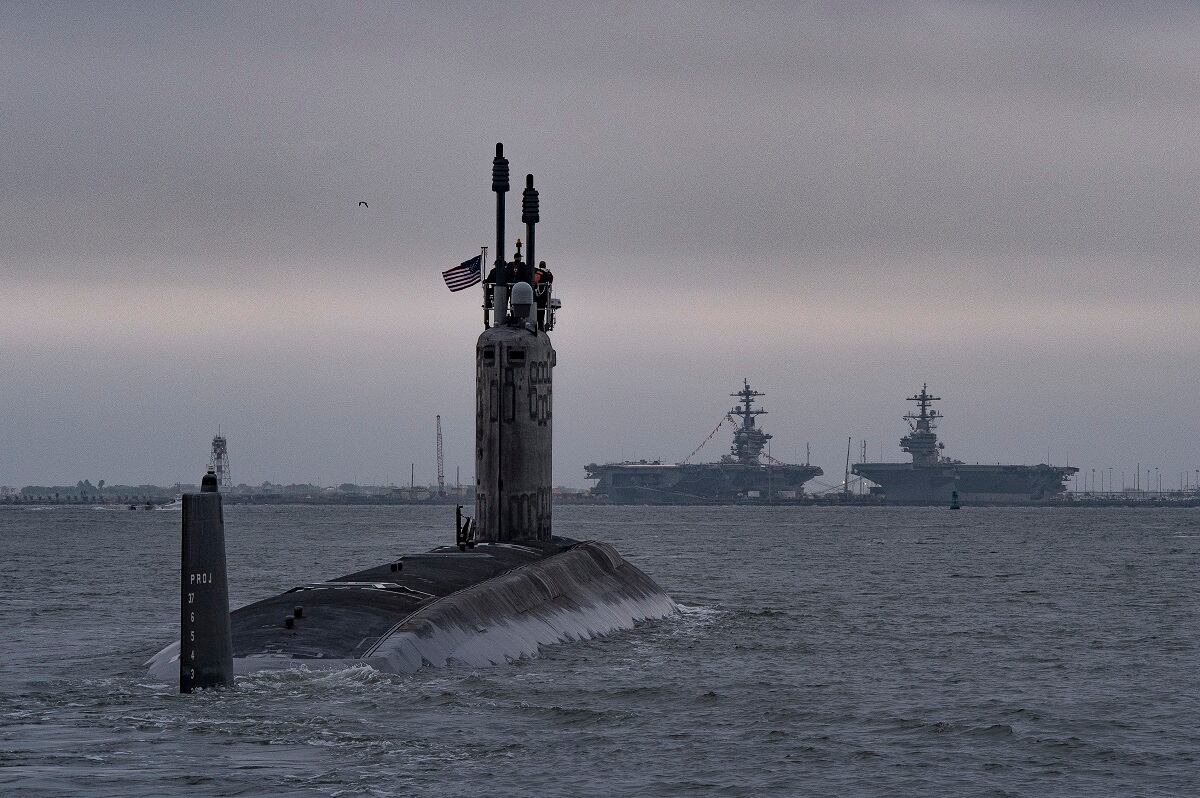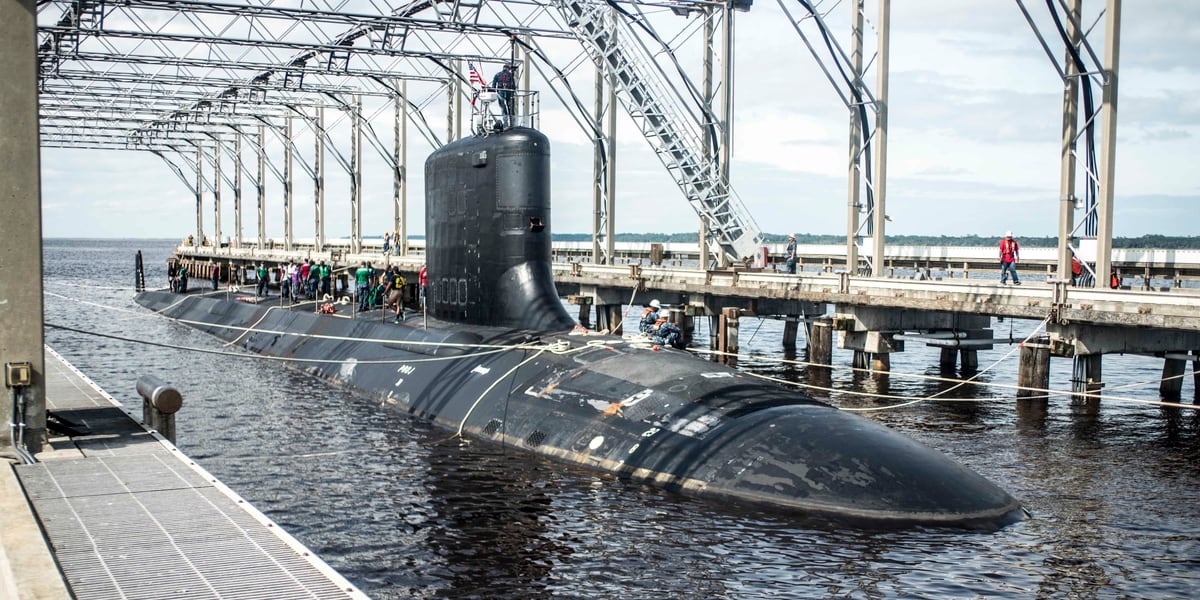WASHINGTON — The U.S. Navy is preparing to sign a contract for nine Virginia-class attack submarines, eight of which will include an 84-foot section that boosts the boat’s strike missile capacity, which is down from 11 boats planned for in this year’s budget submission, Defense News has confirmed with sources familiar with the pending contract.
The contract will also include an option for a 10th boat if needed, sources said.
The news, first reported by Bloomberg, is the latest jolt to the Virginia-class program that has seen creeping delays and slipping profits in recent years caused by labor issues and a strained submarine industrial supply base. The contract was originally intended to be signed by October 2018, at the start of fiscal 2019, according to Navy budget documents.
RELATED

The Navy confirmed in a statement that it was in the final stages of negotiation for the contract but would not talk about the specific number of boats.
“The Navy is dedicated to the Block V Virginia Class program as it will enable the Navy to continue to modernize the nation’s fast attack submarine fleet while providing critical lethality improvements over the Block IV baseline," Capt. Danny Hernandez wrote in an email.
"The Navy has reached agreement on the Block V Virginia Class submarine contract and by the end of the calendar year the Navy intends to award these submarines under a multiyear contract that will enable stability in the industrial base and significant savings over annual procurements. The multiyear contract will achieve significant savings, will include important lethality enhancements, and will provide critical stability to the industrial base,” the officer added.
Two sources familiar with congressional notifications regarding the pending contract confirmed the deal will be for nine boats with an option for one more.
The Navy’s efforts to ramp up production of its Virginia-class attack boats ahead of the start of its massive Columbia ballistic missile submarine program have encountered myriad issues and delays. The most recent Virginia-class boat, the Delaware, was delivered by Huntington Ingalls Industries’ shipyard in Newport News, Virginia, nearly nine months behind schedule, later than the four- to seven-month delays the Navy predicted earlier in the year.
RELATED

Delays coupled with a high-profile quality issue with missile tubes destined for the Virginia Payload Module, the Columbia and the U.K.'s new class of ballistic missile submarine led to a shakeup inside General Dynamics Electric Boat. The company experienced a change in leadership at its Marine Systems division after the top official there retired, and the firm and ousted Electric Boat President Jeffrey Geiger after years of mounting frustration between the Navy and the company.
The strain on the industrial base and the delays likely caused the Navy to see the need to slow down the demand on Electric Boat and its partner yard Newport News while it catches up, said Bryan Clark, a senior fellow at the Center for Strategic and Budgetary Assessments think tank and a retired submarine officer.
“I think that is reflective of the Navy’s recognition that maybe they need to take the foot off the gas pedal a little in sub contracting so they have adequate time for construction. I’m not surprised that they backed off of 11 boats.”
The reduction from 11 to nine boats should not severely impact Electric Boat or Newport News in the long run, but the suppliers that make parts for submarines are a bit more fragile, Clark said.
“The supplier base is the real concern, they are the ones that might truly feel the impact of this,” he said, adding that the Navy might consider contracting for long-lead time materials for a 10th submarine to maintain the supplier base, even if the service ultimately doesn’t buy it.
RELATED

Mixed reactions
On Capitol Hill, there were mixed reactions from top lawmakers on the House Armed Services Committee’s Seapower and Projection Forces Subcommittee.
Rep. Joe Courtney, D-Conn., who chairs the subcommittee, said he is encouraged by the news of the contract, but reiterated his support for an 11th sub in the Block V deal.
“Today’s news that the Block V contract is reaching the final backstretch with a framework that will be built around a minimum of nine subs and an option for a tenth to maintain the program of record shows real progress in terms of getting a stable workload for this critical program," he said. "As recently as last Thursday, myself and Ranking Member [Rep. Rob] Wittman met personally with the Secretary of the Navy to emphatically restate Congress’s support for the President’s budget request for two subs a year, as well as the Administration’s request for an eleventh submarine.
“The final design of the contract is still weeks away, and we are going to continue to advocate for a program that addresses the Navy’s attack submarine shortfall as well as integrates this program into the Columbia class that is beginning in earnest. If the Navy believes that the option for a tenth boat is the best way forward, then using the Congressionally-mandated option in 2023 is the most prudent way to achieve that goal.”
His Republican counterpart, Wittman of Virginia, said in a statement that shorting the buy would not adequately address a pending shortfall in attack boats in the late 2020s, when retiring Los Angeles-class boats will drop the Navy from 52 to 42 boats, well short of the current 66-boat requirement.
“Our combatant commanders have been consistent that the most critical asset they need are attack submarines, and this is before we realize a 20% reduction over the next ten years," Wittman said. "Industry is prepared to execute and the Navy needs to deliver — Congress is clearly behind them.
“While the Office of the Secretary of Defense (OSD) has certified a nine-ship multiyear, a ten-ship multiyear would provide additional cost savings. Therefore, not only is a ten-ship multiyear more cost effective, it is a strategic imperative — we need to reverse the continued loss of submarines before it is too late.”
David B. Larter was the naval warfare reporter for Defense News.








